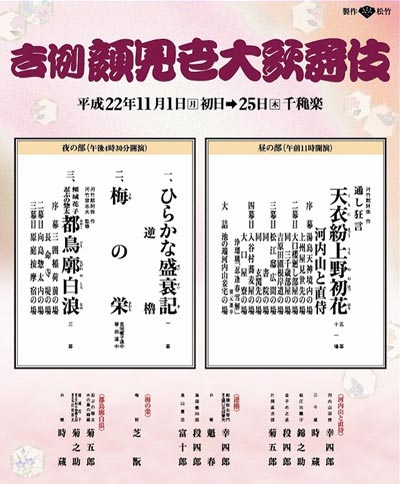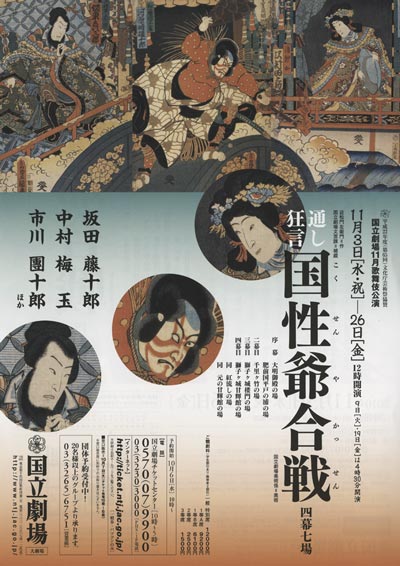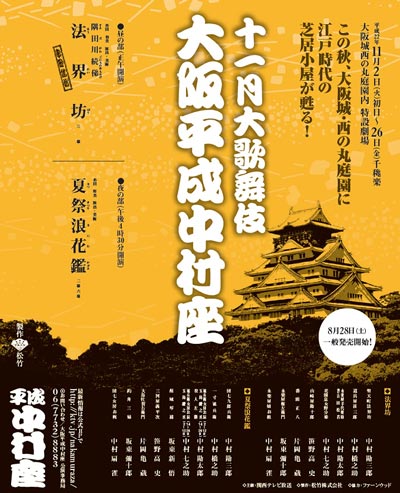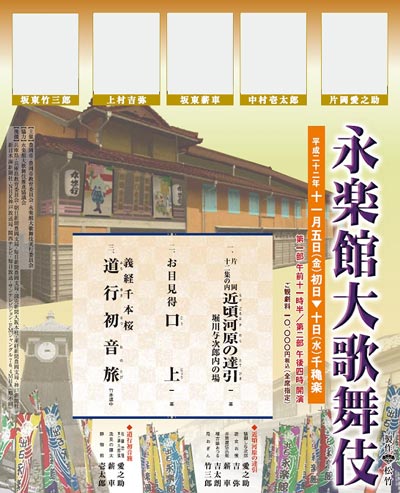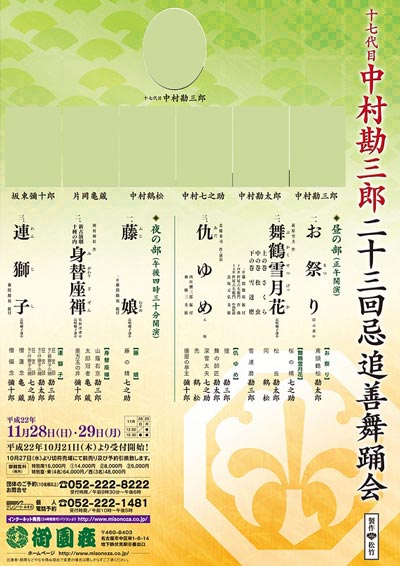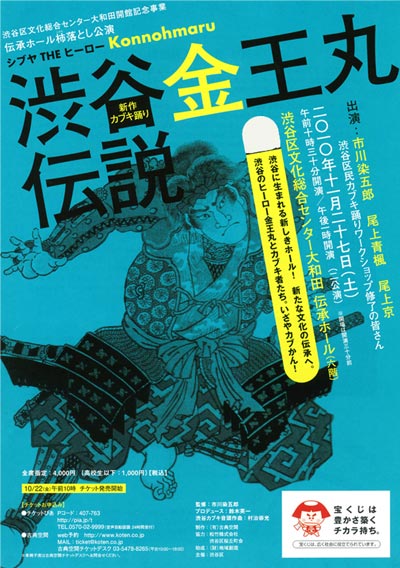| Comments |
Kumo ni Magou Ueno no Hatsuhana: the matinee program is a full-length performance of
"Kumo ni Magou Ueno no Hatsuhana" by Kawatake Mokuami. The play is full of the lush,
dark atmosphere of late Kabuki and dramatizes the story of the Tenp˘ Rokkasen, a gang of thieves made famous
in popular novels. The play is extremely famous and performed often, but usually is presented in versions
focusing on either K˘chiyama (Matsumoto K˘shir˘), the priest who is the head of the gang, or handsome young Naozamurai (Onoe Kikugor˘).
This month will present both of these sections together, along with other seldom performed scenes.
Namiji, the daughter of a widow running a pawnshop has been favored by a samurai lord and has become a
lady-in-waiting in his mansion. But the widow has not heard from her daughter in a long time and has heard
strange rumors that the lord is trying to seduce her and is keeping her locked up until she complies with his
wishes. The desperate widow asks for the help of K˘chiyama S˘shun, a priest who conducts tea ceremonies inside
the Sh˘gun's palace but who actually is the leader of a gang of thieves. K˘chiyama takes advantage of his
shaved head to masquerade as a priestly emissary from the Sh˘gun. He forces the lord to let Namiji go and also
extorts a hefty bribe from the lord as well. But as K˘chiyama is leaving, one of the chief retainers of
the mansion who is in fact, plotting against the lord himself, recognizes K˘chiyama.
Suddenly the measured cadences of the priest change to the rough speech of an Edo thief. He sits in the entrance
hall, daring them to throw him out, exposing the stupidity and villainy of the lord to the world.
Finally K˘chiyama leaves triumphantly, calling them all a pack of idiots. The masterless samurai named Naozamurai
belongs to a gang of thieves. The police are hot on his trail, but before he leaves Edo, he meets his lover,
the courtesan Michitose (Nakamura Tokiz˘) for one final time. Their meeting is the highlight of this act and this bittersweet
reunion is accompanied by one of the most famous pieces of romantic Kiyomoto music.
Featuring also Ichikawa Danshir˘ and Nakamura Kinnosuke.
Sakaro:
(The Rise and Fall of the Heike Clan - Reverse Rowing)
A period play taken from the Bunraku puppet theater
which combines a historical tale with the daily life of commoners.
Matsuemon (Matsumoto K˘shir˘) has married into the family of a country boatman. Having learned the special
rowing skills of his father-in-law, he is invited to transport the Genji general Yoshitsune.
But Matsuemon is actually the warrior Higuchi Kanemitsu, a leading retainer of a general killed by Yoshitsune and he sees this as a perfect opportunity to take his revenge. Before he can put his plan
into action, though, his identity is discovered and he is captured in a spectacular battle on
sea and land. Featuring Ichikawa Danshir˘, Nakamura Kaishun and Nakamura Tomijűr˘ in the roles of Gonshir˘, Ofude and Hatakeyama Shigetada.
Ume no Sakae:
The Splendor of the Plum Blossoms
This short, auspicious dance evokes the atmosphere of the New Years with the happy celebrations and beautiful
sight of the bush warbler singing in the red and white plum blossoms as the snows of winter begin to melt.
Starring Nakamura Shikan.
Miyakodori Nagare no Shiranami: this is a rare performance of a play by Kawatake Mokuami
showing a thief who pretends to be blind in the dark and steals for the sake of his lord, but accidentally
kills his lordĺs son, a boy disguised as a beautiful courtesan. The play is full of the decadent, erotic
atmosphere of the late Edo period.
Starring Onoe Kikugor˘, Nakamura Tokiz˘ and Onoe Kikunosuke.
Source: Earphone Guide website
|
